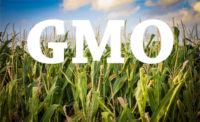
In-plant packaging of fresh meats in modified atmosphere packages and other case-ready containers is growing rapidly, but the use of carbon monoxide in those packages is a contentious issue. Source: Alcan Packaging.
Don Berdahl, vice president and lab director at Kalamazoo, MI-based Kalsec Inc., petitioned FDA in November, requesting the agency withdraw GRAS (generally recognized as safe) status for carbon monoxide (CO) in fresh meats. Carbon monoxide stabilizes fresh meat's color by reacting with muscle myoglobin to form carboxymyoglobin. The problem, Berdahl explains, is that the color becomes fixed, depriving consumers of a visual cue to meat's age. "I put (CO treated) beef purchased October 24, 2005, in my refrigerator, and it's still bright red and doesn't look slimy," he says. Samples were taken to Capitol Hill to marshal Congressional support for his petition, "and looking at the meat samples brought the issue home," Berdahl says. On the House floor, US Rep. Bart Stupak (D-MI) called CO color-locking "clearly consumer deception" while introducing legislation to allow states to mandate CO labeling.
Lake Forest, IL-based Pactiv Corp. received the first FDA letter of acceptance in 2002 for its ActiveTech MAP system with CO. In 2004, Precept Foods, a joint venture of Cargill and Hormel, gained GRAS status at the same 0.4 percent CO level in its MAP system. Last year, Tyson Foods Inc. was greenlighted for CO at 0.89 percent of package atmosphere. In December, Tyson requested approval for CO at a level of 2.22 percent, or 5.5 milligrams per lb.
"None of those (petition responses) are approvals," cautions George Pauli, a supervisory consumer safety officer at FDA. While the agency is satisfied there is no chemical toxicity, the question of whether CO masks spoilage is now being considered.
Kalsec's petition drew a sharp rebuke from the American Meat Institute. It lambastes the petition as "a calculated move to discredit a competing technology" that could reduce product returns of up to $1 billion annually, partly because of browning. Much of those returns are case ready, a fast growing category poised to surpass $10 billion.
"There's no question we have a financial interest," Berdahl readily admits, "but both parties have a financial interest in the outcome. The issue is, what is right for the consumer?" Kalsec produces Herbalox, a rosemary extract that serves as a color additive. But gradual color change occurs with Herbalox, which primarily manages lipid oxidation. "We add a day, maybe two at the maximum to the shelf life," says Berdahl. At sufficient levels, CO will retain meat's redness even after cooking, he says.
The European Union's Scientific Committee on Food rejected the use of CO in MAP in 2000, citing the potential for cold-chain abuse and consumers' reliance on redness in purchase decisions. The Consumer Federation of America and Safe Tables Our Priority are supporting the Kalsec petition and urging FDA to ban CO in fresh meat.
For more information:
Don Berdahl, Kalsec Inc., 269-349-9711,DBerdahl@kalsec.com





